Losing a dog is incredibly painful, and in your grief, you’ll face decisions you may have never had to make, such as tending to your beloved fur baby’s remains. While many choose to have their dog cremated, others opt for a backyard burial instead.
We’ll dive into this subject below and discuss dog burial, its pros and cons, and the things you’ll need to know to complete this heart-wrenching task. Hopefully, this will allow you to decide if it’s the right choice for you.
How to Bury Your Dog: Key Takeaways
- Burial is one of the options available to owners of recently deceased pets. Burial isn’t the right choice for dealing with the remains of your lost pet, but it is the preferred approach for many.
- If you choose to bury your pet, you’ll have to prepare properly and research the applicable laws in your area. After verifying that you may legally bury your pet, you’ll need to pick a location, dig the hole, and prepare your pet’s remains.
- Alternatives to a backyard burial include cremation, purchasing a pet cemetery plot, and donating your dog’s body to a research institution. Each owner will simply need to decide what will work best in his or her situation.
Is It a Good Idea to Bury a Dog?
Pet burial is a personal decision every owner will have to make for him or herself. Having your dog at home in the yard is comforting to many owners seeking burial, but there are important things to consider before burying your dog, including:
- Legality: Backyard pet burials aren’t legal in all municipalities. In fact, some township ordinances ban the practice outright. If you’re renting your home, it can also be an issue. You can usually examine town ordinances online or by contacting your local municipal office.
- Safety: Medications may linger in remains long after death, including euthanasia and chemotherapy drugs. These powerful chemicals pose a serious risk to other animals, including pets and wildlife. If ingested, they can lead to severe illness or death.
- Other animals: Whether it’s pets in the home or wild animals, remains can be dug up — a horrifying experience no one wants to face. Not only is this deeply upsetting, but it can be dangerous, as mentioned above.
- Future plans: Leaving your beloved dog’s body behind with a move isn’t an option for many pup parents, leading to grave excavation down the road that is often more traumatizing than the initial burial. It can also be a health risk.
- Climate: Areas that see heavy rains aren’t suitable for backyard burials. Excessive rainfall can make your dog’s body resurface — a true nightmare scenario. On the flip side, cold weather can make backyard digging dang near impossible for a portion of the year.
- Difficulty: Digging a hole for burial and prepping your dog’s body isn’t physically or emotionally easy. You’ll need to dig a hole that’s three feet deep or more, as well as wide enough to fit your dog’s remains. You’ll also need to handle your deceased pet’s body, which can be emotionally devastating as it begins to show signs of death.
Weighing these factors before burial can save you unnecessary heartache in the long run.
How to Bury Your Dog: A Step-by-Step Plan
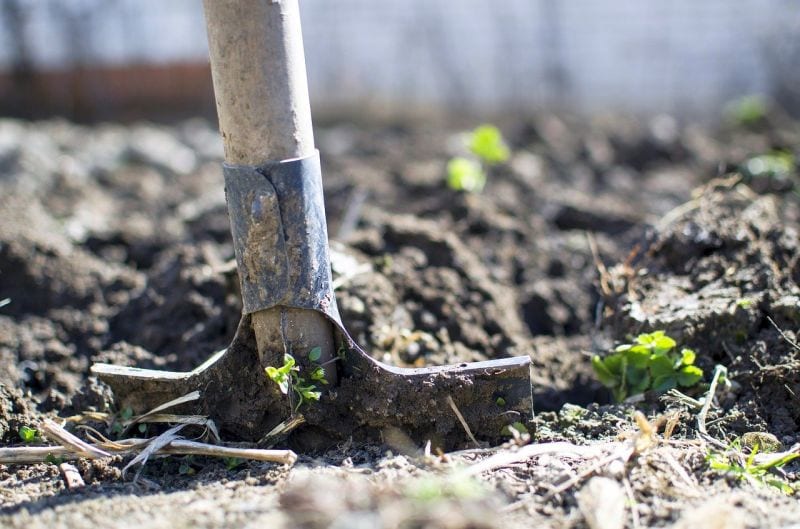
Before beginning the burial process, it’s best to devise a plan to follow. This can make the process easier on you emotionally, as you don’t need to think or search for items in the moment, giving you a chance to grieve during the burial.
1. Say Goodbye
Saying goodbye to your dog’s remains isn’t easy, but it’s a vital part in the grieving process. You may want to stroke his fur or take a paw print impression or ink blot during this time, so you can always keep him with you.
2. Wrap Your Pup’s Body
Wrap your dog’s remains in a sheet, blanket, or other disposable item for burial. Some pup parents opt for using their dog’s favorite blanket with a toy tucked inside, but this is entirely up to you. Not only does this make burial easier since you won’t see your dog’s body in the ground, but it will also contain any messes that occur after death.
3. Pick a Location
Select a spot in your yard that is suitable for digging. It should provide adequate drainage and never experience standing water, as this can lead to resurfacing. Ideally, it should be in an area that’s not at risk of digging by other animals, including other resident dogs, such as a gated-off garden.
4. Dig the Hole
Digging the grave before you bring his remains outside can give you a few minutes of peace when you need it most. It’s also far easier to do this without having to stare at your dog’s prepared remains.
The hole should be at least 3 feet deep and wide enough to fit your dog’s remains, though rules may vary according to local regulations. In areas where wildlife is common, a deeper hole may be ideal.
5. Place Your Dog’s Body In Hole
Some owners opt for placing their dog’s body in a wooden or cardboard coffin, but you can also place your dog directly into the earth in his wrapped state. Gently lower your pooch’s remains into the hole.
6. Refill the Hole
You can say a doggy prayer or add flowers atop your dog’s remains before you fill the hole, or you can immediately begin burial.
Halfway through refilling, you may want to spread a thin layer of kitty litter to block any decomposition odors that will attract the attention of other animals. Fill the grave entirely and walk over the top to make sure it’s pressed down to avoid tempting other animals into investigating the disturbed soil.
7. Add a Memorial Stone or Marker
Many pup parents opt to add a headstone, pet memorial stone, or grave marker that honors their beloved pet. You can make one yourself using wood or you can custom-order a stone headstone that may feature things like your pup’s name, image, or a special phrase. Some people opt to decorate the grave with flowers, too.
If a backyard burial is too hard for you to do yourself, you can also ask a trusted friend for assistance or opt for burial alternatives, such as pet cemeteries and cremation.
What Happens When You Bury an Animal?
Though it may strike some as a macabre question, many owners are genuinely curious what happens to their pet after burial.
Basically (and without going into unnecessarily upsetting detail), your pet’s body will break down (decompose) over time in the ground. A variety of organisms will consume his remains and convert them into their own tissues.
In a way, your dog will become part of the plants and tiny organisms living in the area — a thought that gives some owners a small measure of comfort.
The pace at which this occurs will vary, but it’ll typically take several months for the process to conclude.
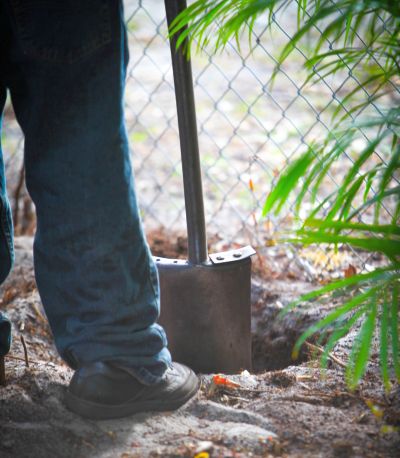
Weather conditions like high heat and humidity will increase the rate of decomposition, while cold temperatures and drought may prolong the process.
If your pet’s remains are encased in a blanket or coffin, the decomposition process will take a bit longer. But in time, your pet’s body will wither down into nothing more than bone. Any of the items you buried with him (such as blankets or a favorite toy) will likely last longer than his remains will. However, these things will eventually break down too.
Alternatives to Burying Your Dog in the Backyard
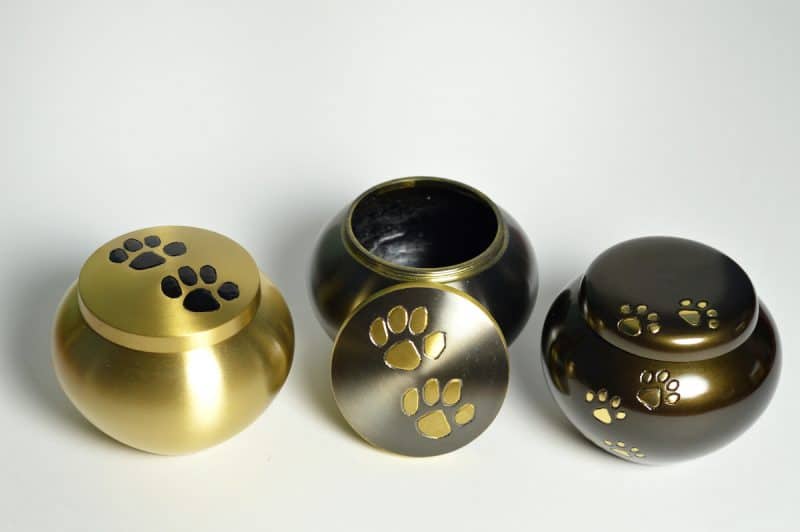
Backyard pet burials aren’t for everyone, and there are several alternatives to consider if you’re on the fence or convinced it isn’t best for you.
Some dog burial alternatives include:
- Pet cemetery: At these facilities, the bulk of the work surrounding dog burial is handled for a fee, including digging the hole and maintaining the grounds. Most are traditional grave sites like human cemeteries while others have mausoleums with spots that you buy. This can cost upwards of $500 for the burial plot and handling charges, and you may also need to pay yearly maintenance fees.
- Cremation: This involves incinerating remains into ash that you can store at home in a pet urn or have made into pet memorial jewelry. Dog cremation generally costs anywhere from $150 to over $1000, and typically involves receiving your dog’s ashes back within a few days. Pricing is greatly impacted by your dog’s size and whether you choose communal cremation or private cremation.
- Alkaline hydrolysis: More environmentally friendly than cremation, alkaline hydrolysis is a process that uses water, alkaline chemicals, and heat to break down the body. This isn’t as widely available as cremation, however, though pricing can be comparable.
- Donating for research: For doggos with rare or hard-to-treat conditions, this is one of the most selfless ways you can handle his body. Some universities are looking for deceased dogs with rare medical maladies to study in hopes of saving lives in the future.
- Taxidermy: While this certainly isn’t the option for most, you can have your dog preserved via taxidermy. This is an expensive process, with fees beginning around $1000. If done well, it can look like your dog is simply resting, though it can be difficult to see them forever stiff.
Though it isn’t very common, it’s worth considering the fact that pet cemeteries are occasionally sold or repurposed. This can cause you to have to revisit your pet’s death many years afterward, which can obviously be traumatic.
Just be sure to inquire about your chosen cemetery’s long-term land rights and plans.
Let Yourself Grieve after Burying a Pet
Be kind to yourself after the burial. Don’t rush back into your routine. It’s okay to take time to grieve and do things that make you happy.
The loss of a pet is heartbreaking, and it may take several days or weeks to stop tearing up at the thought of your dog. Your feelings are valid, and it’s natural to mourn the loss. Surround yourself with happy memories, and if needed, join a pet loss support group. You’re not alone in this journey, and it will get better in time.
***
We’re sorry that you’ve had to Google this kind of question in the first place, but we hope this article has provided the information you need. Feel free to share your burial experiences in the comments below — they may prove helpful for other readers.

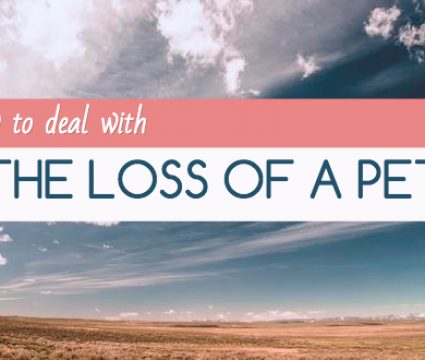



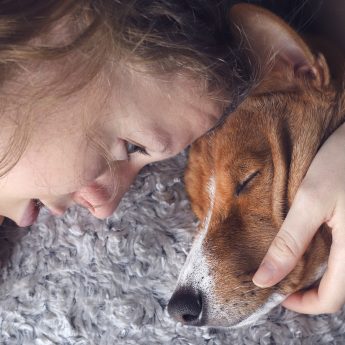


10 Comments
April 2, 2023
Thank you for this. I knew most of the answers, but comforting to read them and especially in your empathetic style
April 3, 2023
Sorry you needed to Google this kind of thing in the first place, Raphael, but we’re glad you found Kelsey’s article helpful.
Please don’t hesitate to check out some of our dog loss resources — they may help too.
December 12, 2022
Last week was the most horrific and tragic death of Our family dog our good ole boy Rocky he was a Boxer (fawn). My youngest called me and my fiance to ask what he should do about Rocky? I said why? He said he’s having a seizure and foam is coming out his mouth. So we rushed over to help my son and our good ole boy Rocky. When we got to him I held him still cause he was wobbly and walking in circles backwards and foaming at his mouth.So we rushed him to the 24 hr. emergency vet clinic. They took him and tried to save him but we could not afford it so we had to euthanize him so he didn’t suffer. We cried and cried hard. I still can’t believe this happened to our boy in this manner Well if things could not get any more painful they told us we have to take him and figure out what to do with his remains. I had never done this or never felt this aching pain like that day. Then to make matters more gut reching my youngest was hysterical and didn’t want to ride back with us. So I sat with our pooch on my side wrapped in a blanket in the back seat and let my son in front while my fiance had driven us home. We had to bury him in our back yard ..God rest his soul…We prayed and took turns throwing dirt on him ⚰️and my oldest son and youngest buried him all the way ..and we said good bye we will always love and miss you good ole boy…rest in peace.⚰️
December 12, 2022
We’re so sorry, Rose! It’s always awful to lose a dog, but it’s especially hard when it occurs with no warning!
And then having to bury him on top of everything just really makes this story heartbreaking.
We wish you and your family all the best and recommend checking out some of our resources about dog loss. They’ve proven helpful for some of our other readers in similar situations.
September 26, 2021
What this article doesnt address is that the best way to bury your dog in your backyard is in a professionally designed wood or metal casket for your dog that is large enough for the dog and whatever mementos (his favorite harness or sweater or blanket with toys and message to him or her to read after crossing the rainbow bridge). A professionally designed casket should be solid enough to prevent the elements or worse still scavengers from entering it. I’ve always gotten one that I can securely fasten with gorilla glue after placing my loved one inside.
Then as noted in this article three feet down is a minimum but four to five feet is better. That eliminates risk that a subsequent homeowner will accidently dig up your loved one. Then put bricks all around the pine casket, wrap it in a tarp as an extra layer of protection and mix the soil above it with lyme from your local hardware store or home depot to prevent scavengers from detecting any smell.
That is a LOT of work and as noted in this article you’ll also have to find a spot that isnt too wet that also isnt too rocky so you dont hit rock before digging five feet deep. You could hire a professional landscaper to do the work for you.
September 27, 2021
Thanks for sharing your thoughts, Tony.
And you’re right — owners could certainly purchase and use a professionally designed casket if they wish.
August 11, 2021
Thank you for this kind and informative post. I am at this point with my beloved dog and I have so many questions. Your column helped.
August 11, 2021
Sorry to hear that you needed this article, Tisha, but we’re glad it was helpful.
August 4, 2021
I love my dog and will never get over the loss it is as hard as losing my parents
August 4, 2021
So sorry to hear that, Kirk, but we completely understand.
Be sure to check out our article about dealing with the loss of a dog.
We hope that (or anything, really) helps.